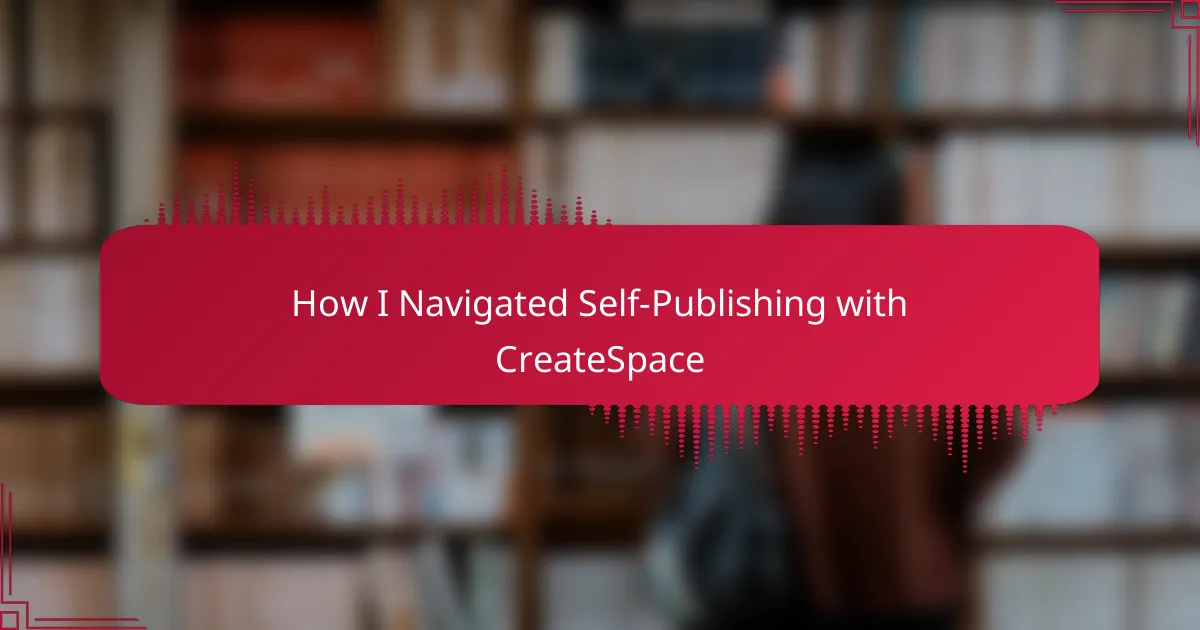Key takeaways
- Self-publishing through platforms like CreateSpace offers authors full control over their content, creative decisions, and direct engagement with readers.
- The process involves clear steps: preparing the manuscript, uploading files, reviewing proofs, and setting price and distribution.
- Utilizing community resources and tutorials can significantly enhance understanding and confidence in self-publishing.
- Patience, community support, and early marketing are crucial for a successful self-publishing journey.
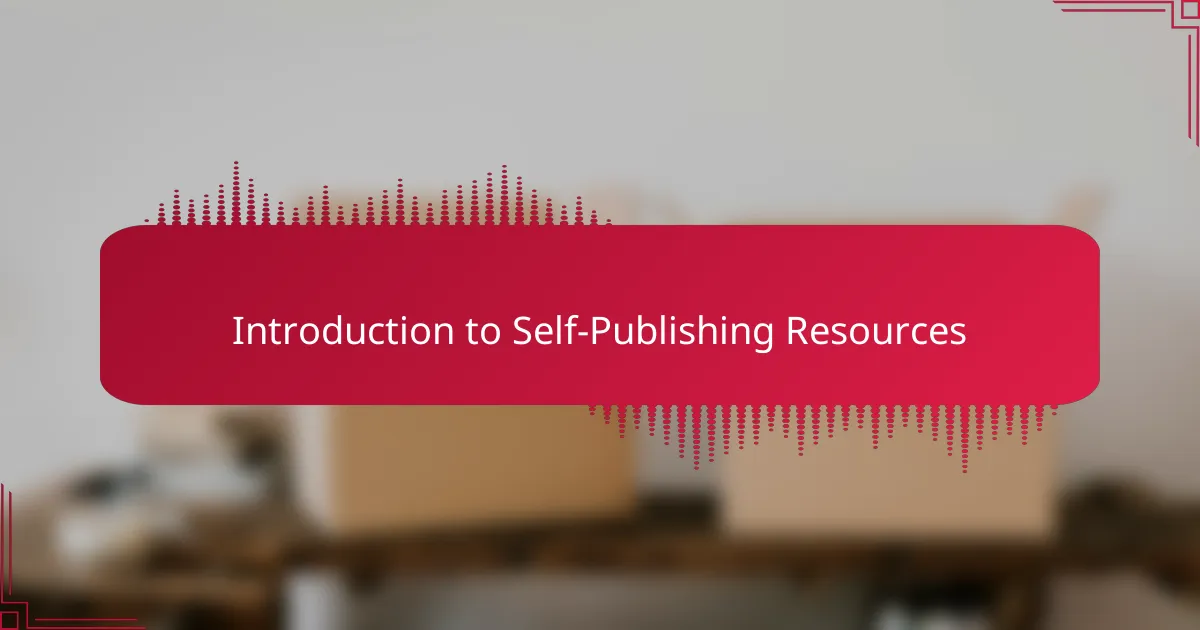
Introduction to Self-Publishing Resources
Navigating the world of self-publishing can feel overwhelming at first, but that’s where resources come in handy. I remember my own uncertainty when I first considered using CreateSpace—was it the right platform for me? It’s normal to have doubts, but digging into the right resources can turn confusion into clarity.
One important aspect of self-publishing resources is access to community knowledge. I often found myself leaning on online forums and groups, connecting with fellow authors who had already walked the path I was about to tread. Their insights were a treasure trove, filled with practical tips and shared experiences that made a real difference in my journey.
Additionally, the wealth of tutorials and guides available online is an absolute game-changer. I vividly recall stumbling upon a step-by-step video that demystified the CreateSpace interface, and I felt empowered to take on the publishing process. Have you had similar experiences with helpful guides? It’s incredible how the right resources can give you the confidence to turn your comic book dreams into reality.
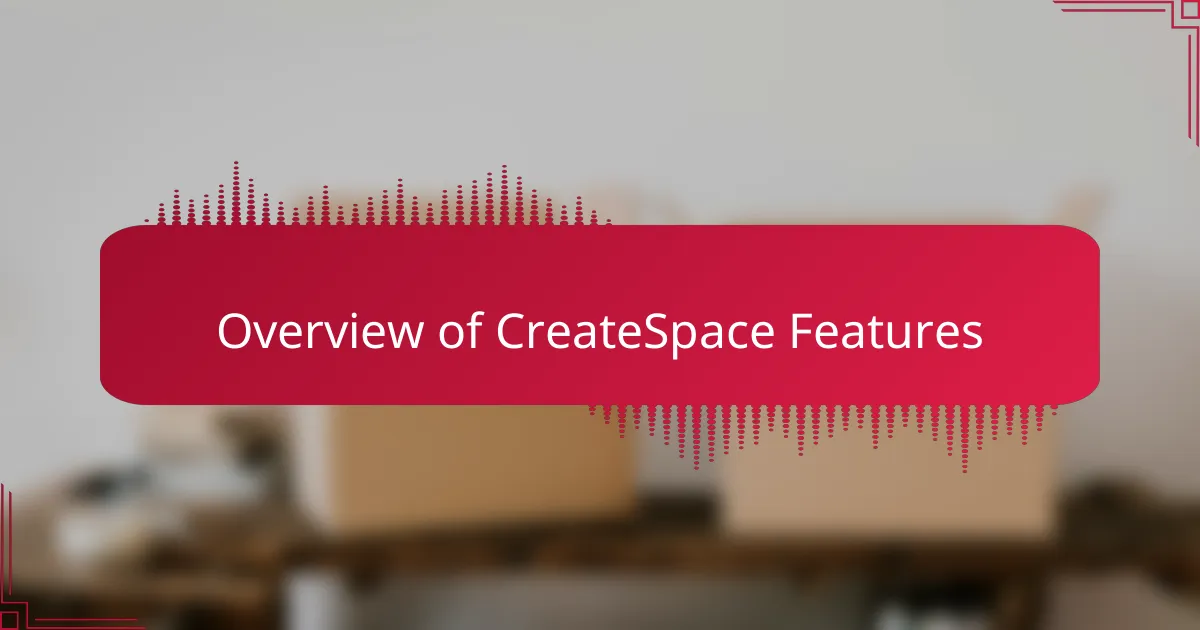
Overview of CreateSpace Features
CreateSpace was a game-changer for my self-publishing journey. The platform offered a wealth of features that simplified the entire process, making it accessible for someone like me, who didn’t have a degree in publishing. One standout feature was the print-on-demand option. I loved knowing that I didn’t have to keep inventory; books were printed as they were ordered, which eased my anxiety about upfront costs.
Another remarkable aspect was the user-friendly interface. I recall spending evenings working on my book’s layout and cover design. It felt like I was finally giving my story the attention it deserved. Plus, the distribution options helped me reach readers I never thought possible.
Here’s a quick rundown of some key features of CreateSpace that I found particularly valuable:
- Print-on-Demand: No need for large print runs; books are printed as they sell.
- User-Friendly Interface: Easy navigation that allows authors to upload and format their work with minimal hassle.
- Cover Creator Tool: A simple tool for designing eye-catching covers, perfect for novice designers.
- Distribution Options: Reach readers through Amazon and other retailers, broadening your audience significantly.
- Royalties and Pricing Control: Flexibility in setting your book price and keeping a larger share of profits.
Navigating these features made the self-publishing process feel less daunting and more like an exciting creative endeavor.
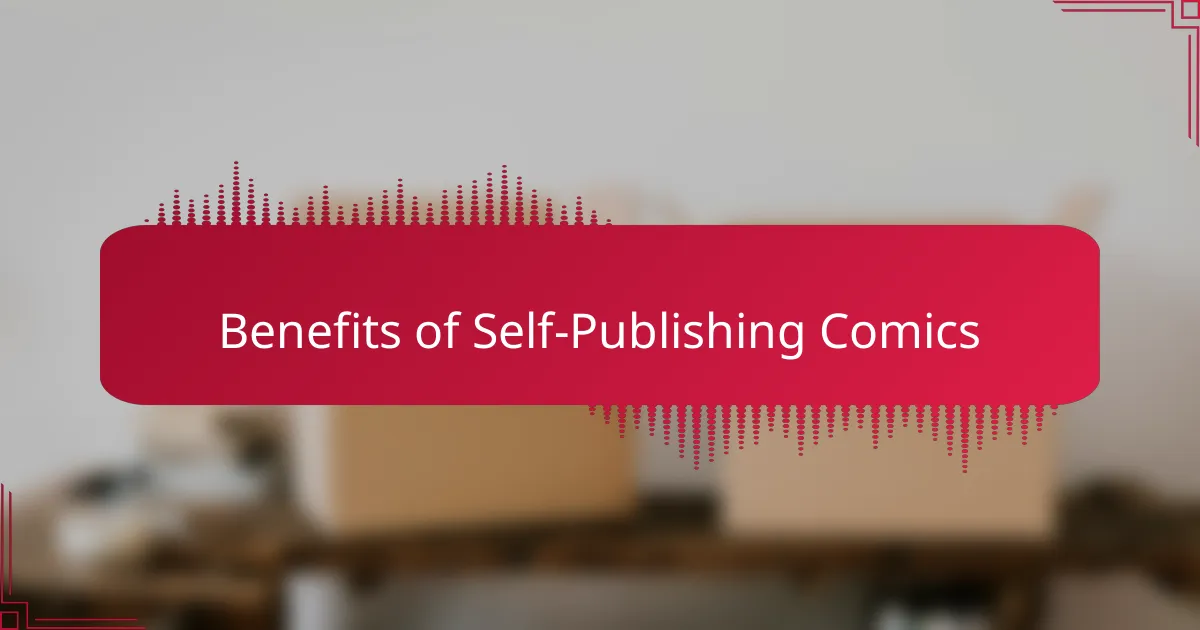
Benefits of Self-Publishing Comics
Self-publishing comics has transformed my creative journey. With platforms like CreateSpace, I gained not only control over my work but also the ability to connect directly with my audience. I cherish the freedom to make every creative decision, from artwork to marketing strategies, fostering a personal bond with readers as I share my vision.
One of the most rewarding experiences was seeing my comic on a physical shelf. It felt surreal to hold my creation in my hands, and the feedback from readers has been overwhelmingly positive. Knowing that I can reach out to my fans and engage with them directly makes self-publishing not just a business venture, but a personal mission.
Moreover, self-publishing enabled me to pursue niche markets that traditional publishers might overlook. This freedom allows for unique, diverse stories that resonate more deeply with specific audiences, making my work feel impactful and authentic.
| Benefits | Traditional Publishing | Self-Publishing |
|---|---|---|
| Control over Content | Limited | Full control |
| Creative Freedom | Restricted | Completely free |
| Direct Reader Engagement | Indirect | Direct and personal |
| Profit Margins | Lower | Higher |
| Niche Markets | Challenging | Accessible |
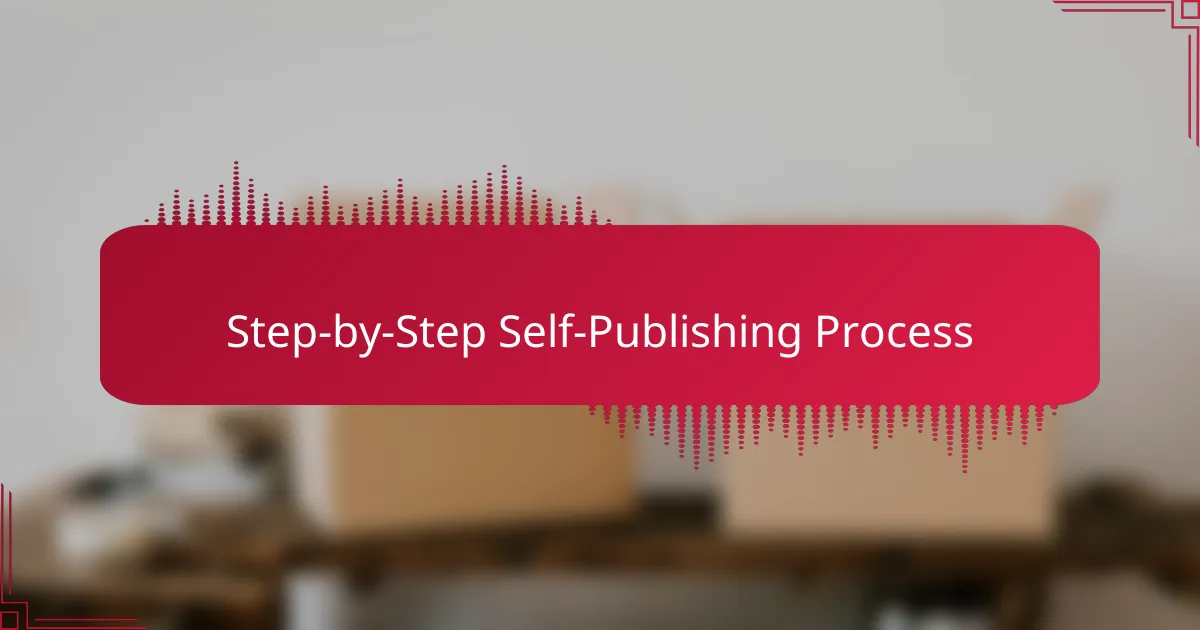
Step-by-Step Self-Publishing Process
Navigating the self-publishing process with CreateSpace can feel daunting, but breaking it down into manageable steps makes it much easier. I remember when I first started; I was overwhelmed by the options. The first step is to prepare your manuscript. Make sure it’s polished and formatted according to CreateSpace’s guidelines; I found that investing time here paid off in a smoother publishing experience.
Next, you’ll upload your manuscript and cover design. I vividly recall the moment I clicked “submit.” It was exhilarating, yet nerve-wracking, hoping everything would turn out as envisioned. After that, you’ll need to review your proofs carefully. This is your chance to catch any last-minute errors. I suggest taking a break before doing this; returning with fresh eyes can make all the difference.
Finally, set your book’s pricing and distribution options. Don’t rush this; consider where your audience is most likely to find your comic. After all, the goal is to share your story with the world!
| Step | Description |
|---|---|
| 1. Prepare Manuscript | Ensure your comic is formatted per CreateSpace guidelines. |
| 2. Upload Files | Submit your manuscript and cover designs for review. |
| 3. Review Proofs | Check your printed proofs for any errors before finalizing. |
| 4. Set Pricing | Determine the price and distribution for your book. |
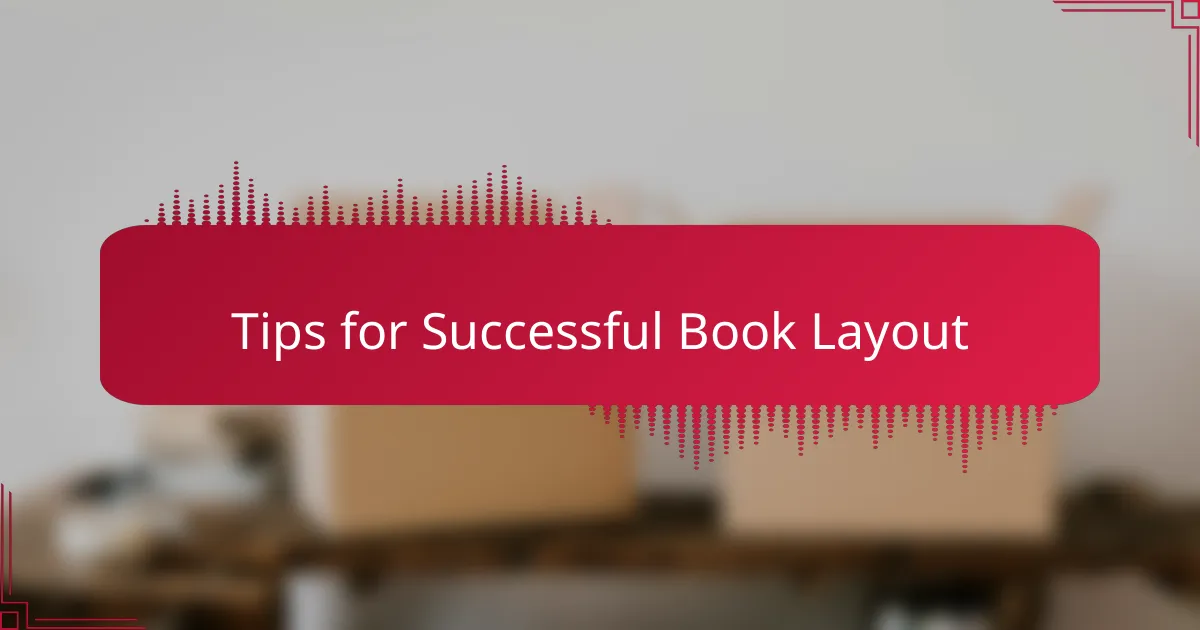
Tips for Successful Book Layout
When I was working on my comic book layout for CreateSpace, I discovered that the visual organization plays a crucial role in the storytelling. I remember spending hours aligning panels and ensuring that the flow from one page to the next felt seamless. It’s all about guiding your readers’ eyes and emotions through the narrative, making them feel invested in your story.
A well-thought-out layout not only enhances readability but also reinforces the tone and pacing of your comic. After experimenting with different formats, I found a balance between image and text that resonated with my audience. Here are some key tips I learned along the way:
- Plan Your Panels: Sketch out a rough layout before committing to final designs. This will save you time and ensure a smooth flow.
- Consistent Margins: Maintain uniform margins for a polished look—this might seem minor but contributes greatly to overall professionalism.
- Font Selection: Choose legible fonts that reflect your comic’s personality. Avoid overly ornate styles that can distract from the artwork.
- Image Resolution: Always use high-resolution images for print to guarantee vibrant colors and sharp lines.
- Test and Revise: Share early drafts with trusted peers for feedback. Fresh eyes can catch issues you might overlook.
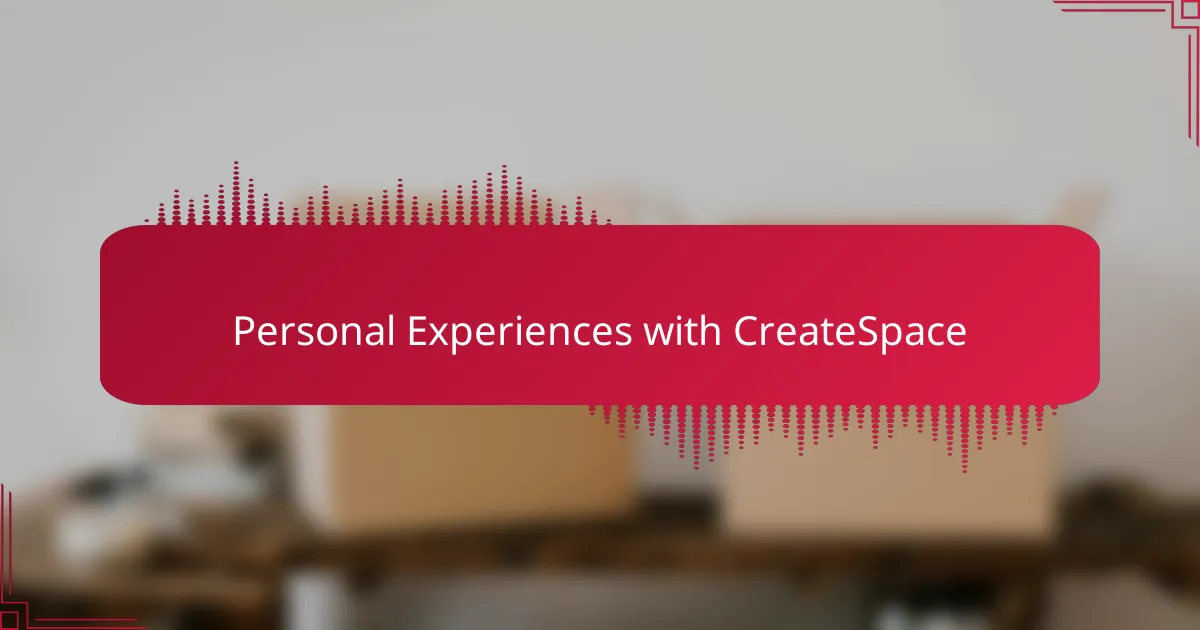
Personal Experiences with CreateSpace
Navigating the self-publishing process with CreateSpace was a journey filled with excitement and challenges. I remember the thrill of holding my first printed comic in my hands after weeks of hard work. The platform was user-friendly, empowering me to control almost every aspect of my project, from formatting to cover design.
One of the most significant moments was when I hit “publish” for the first time. I felt a mix of anxiety and elation, unsure of how my work would be received by others. Based on my experience, getting feedback from readers was a rollercoaster of emotions, but ultimately rewarding.
Here’s a quick comparison of some features that stood out to me while using CreateSpace:
| Feature | Description |
|---|---|
| User Interface | Intuitive and straightforward, perfect for first-timers. |
| Cost | No upfront costs, only printing cost per copy, which is budget-friendly. |
| Distribution | Wide distribution option, including Amazon; great for visibility. |
| Royalties | Competitive royalty rates that increased my excitement as sales grew. |
| Quality Control | Ability to order proof copies was essential for ensuring quality. |
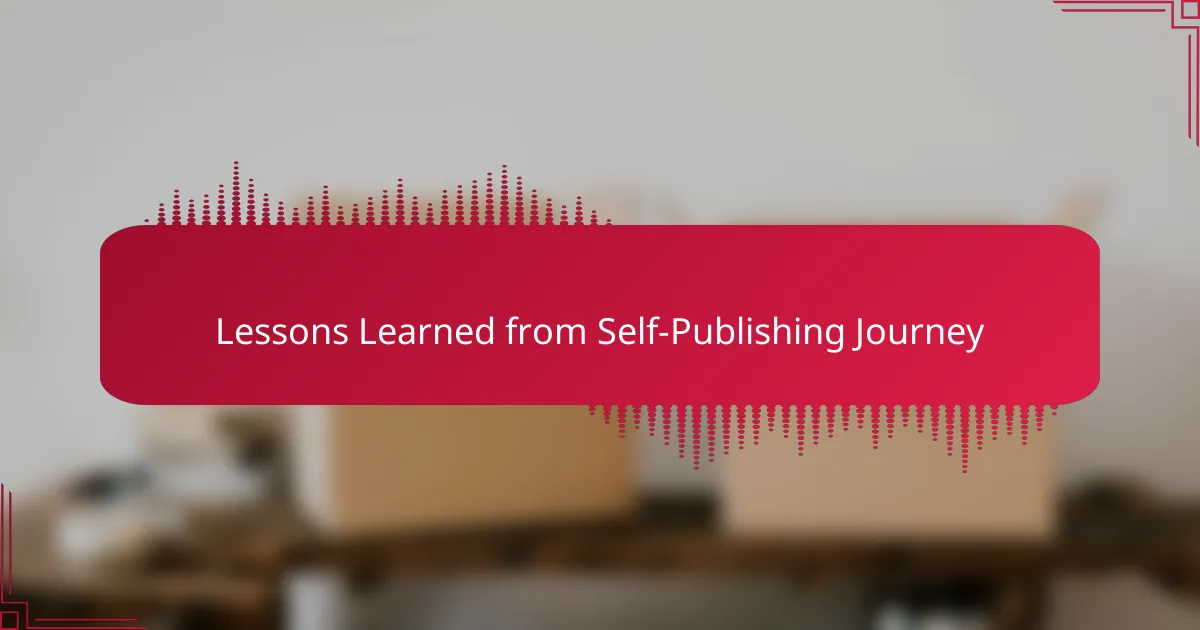
Lessons Learned from Self-Publishing Journey
Navigating my self-publishing journey with CreateSpace taught me several invaluable lessons. First, I learned that patience is key—there were numerous revisions and long waits, but each step improved my comic’s quality. I vividly remember feeling frustrated at times, but seeing my artwork finally come to life made it all worthwhile.
Another major takeaway was the importance of community. I reached out to fellow authors and gained insights that were instrumental in refining my work. Their support not only encouraged me but also provided practical tips that I hadn’t considered before.
Finally, I realized the significance of marketing even before my comic was published. I started building an audience early on, which made a tremendous difference when the time came to launch. It was an experience full of ups and downs, but each moment has shaped my path as a comic book author.
| Lesson | Insight Gained |
|---|---|
| Patience | Necessary for revising and perfecting the work |
| Community Support | Valuable insights and encouragement from fellow authors |
| Early Marketing | Building an audience before launch drives success |
